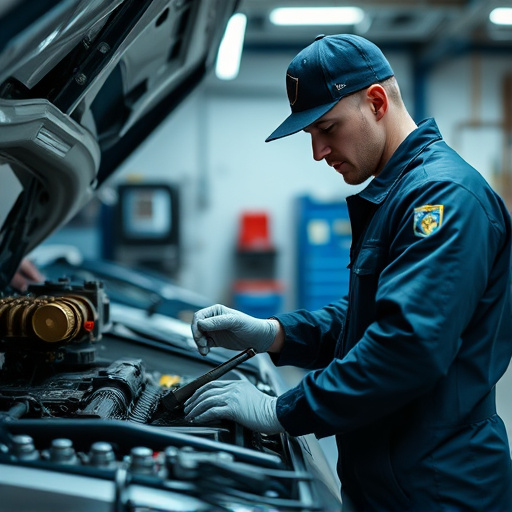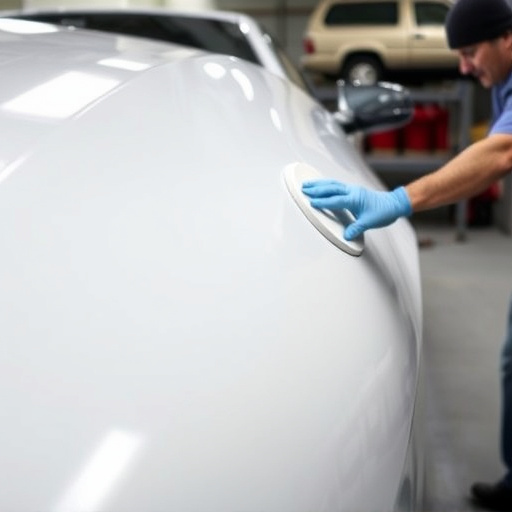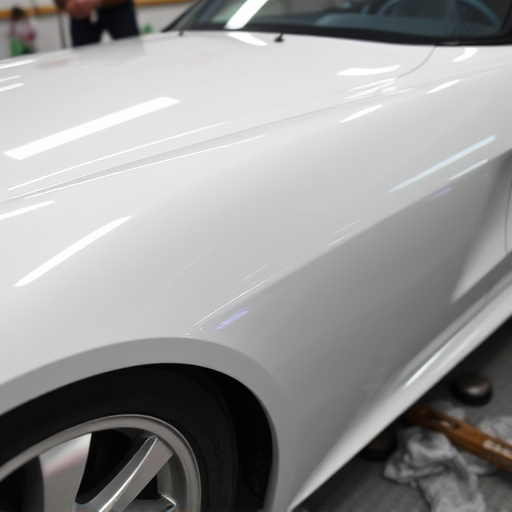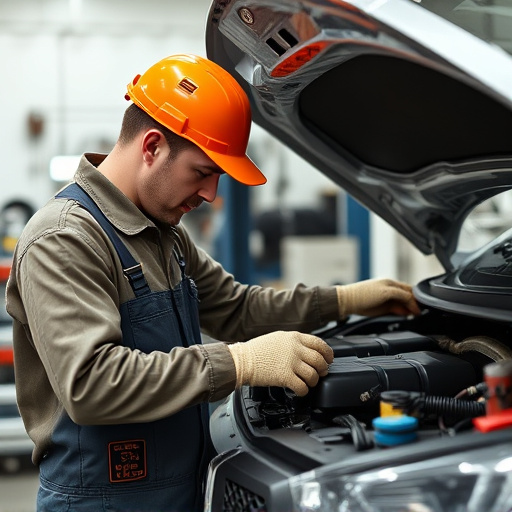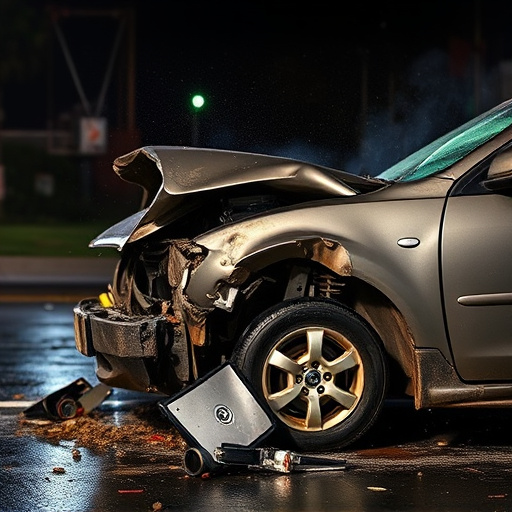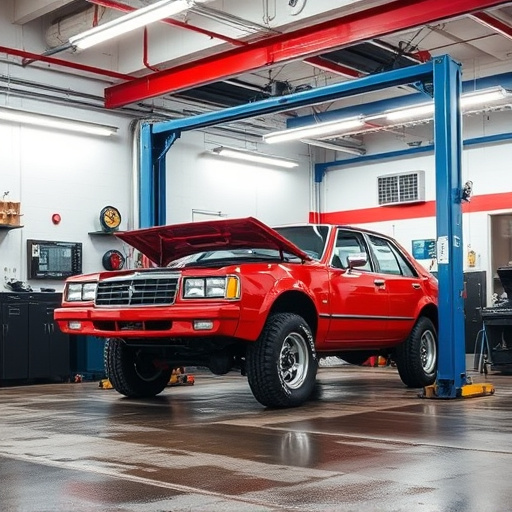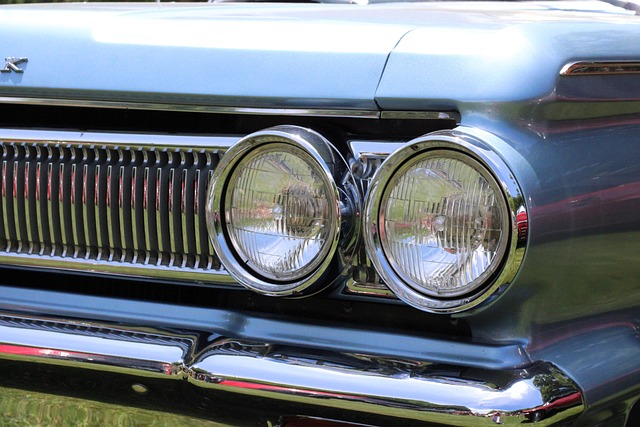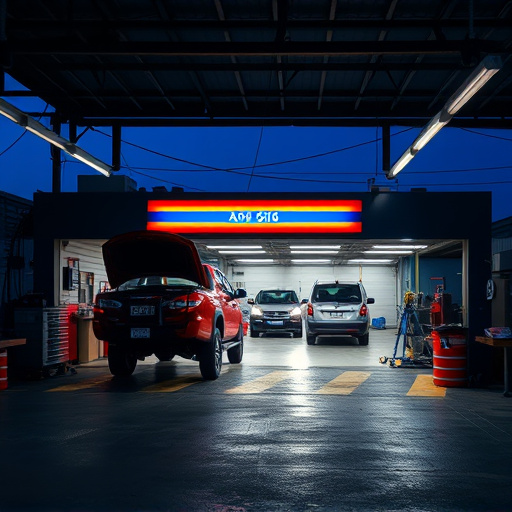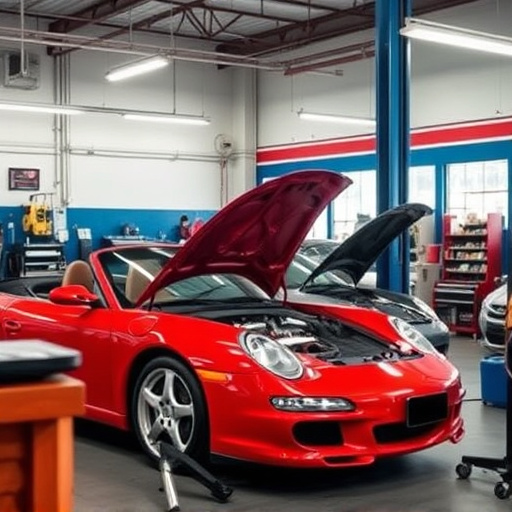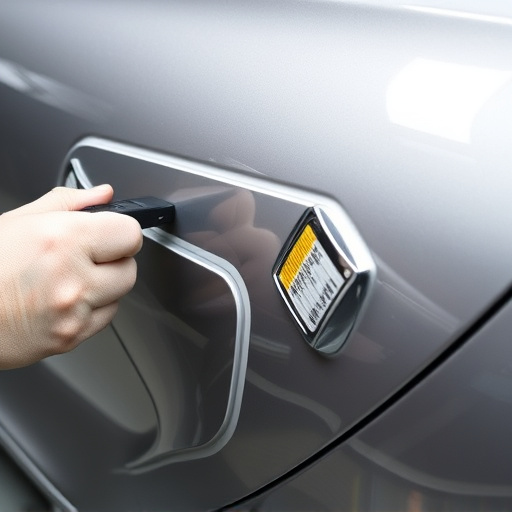Full panel replacement is a specialized automotive collision repair process that restores vehicle exterior panels to their original state. It involves thorough assessment, removal of damaged panels, preparation, fitting new ones with advanced adhesives, and precise alignment for factory-like finishes. Skilled technicians must exhibit precision, use best practices like detailed measurements and specialized tools, and communicate effectively for successful full panel replacement outcomes.
“In the realm of automotive maintenance, full panel replacement is a critical skill. This comprehensive guide delves into the intricate process technicians employ for precise full panel replacements. From understanding the necessity of this procedure to exploring the step-by-step techniques and common challenges, we offer an in-depth overview. Discover best practices that ensure successful outcomes, empowering both seasoned professionals and those new to the field. Master the art of full panel replacement with our expert insights.”
- Understanding Full Panel Replacement: A Comprehensive Overview
- Step-by-Step Guide: Technicians' Process for Precision
- Common Challenges and Best Practices for Successful Replacement
Understanding Full Panel Replacement: A Comprehensive Overview
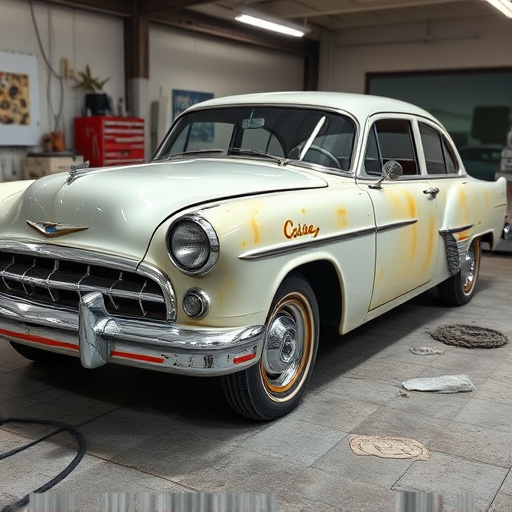
Full panel replacement is a specialized process within the automotive industry, particularly in vehicle collision repair. It involves the complete restoration of a vehicle’s exterior panels to their original state after sustaining significant damage, typically from a collision or accident. This intricate procedure demands precision and expertise from technicians who must accurately identify and replace every affected panel while ensuring seamless integration with the existing vehicle structure.
In a typical auto collision center, full panel replacement begins with a thorough assessment of the collision damage repair needs. Technicians employ advanced tools and techniques to determine which panels require replacement, taking into account factors like degree of deformation, material compatibility, and structural integrity. Once identified, the damaged panels are carefully removed, often requiring specialized equipment to handle complex shapes and curves common in modern vehicle designs. Successive steps involve preparing the surface, fitting new panels, and utilizing advanced adhesives and fasteners to secure them firmly in place, ensuring both safety and aesthetic appeal. This meticulous approach is crucial for achieving a factory-like finish, restoring the vehicle’s structural integrity, and enhancing its overall appearance following collision damage repair.
Step-by-Step Guide: Technicians' Process for Precision

Technicians performing a full panel replacement in an auto body shop require meticulous precision and a structured approach. The process begins with a thorough inspection of the damaged area, identifying every component that needs replacing. This involves a detailed assessment of the panel itself, as well as adjacent parts like bumpers, fenders, and trim pieces. Once the scope of work is clear, the technician gathers the necessary tools and replacement parts, ensuring they are compatible with the vehicle’s make and model.
The actual full panel replacement involves several step-by-step processes. First, the old panel is carefully removed, taking note of any existing markings or alignment points for accurate reinstatement. Then, the new panel is fitted, making sure it aligns perfectly with the surrounding panels and structural components. This requires skill and attention to detail to maintain the vehicle’s original shape and integrity. After alignment, the technician secures the new panel using specialized hardware, ensuring a strong and durable connection. Finally, they perform quality checks, making adjustments as needed until the full panel replacement is flawless, ready for the finishing touches, such as painting or detailing, to bring the auto body services up to par.
Common Challenges and Best Practices for Successful Replacement
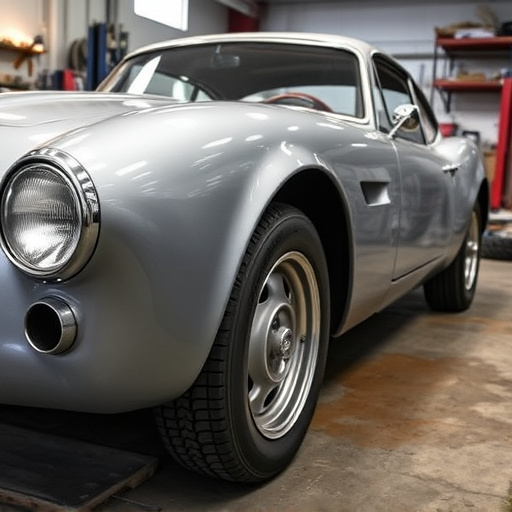
Performing a full panel replacement is an intricate process that requires precision and expertise. Technicians often face several common challenges when undertaking such tasks. One significant hurdle is ensuring accurate alignment and fitment, especially with modern cars’ complex panel designs. Panels can have intricate contours, slopes, and curves, making it crucial to match these precisely for a seamless finish. Misalignment can lead to visible gaps or uneven surfaces, impacting the vehicle’s aesthetics and structural integrity.
To overcome these challenges, best practices include meticulous planning and preparation. Technicians should thoroughly inspect the damaged area, create detailed measurements, and reference original manufacturer diagrams. Using specialized tools for dent removal and panel adjustment ensures accurate alignment. In cases of extensive damage or complex geometry, classic car restoration techniques may be employed, requiring skilled craftsmanship to restore the panel to its pre-collision condition. Effective communication between technicians is vital to ensure everyone involved understands the replacement process, leading to successful outcomes in car collision repair scenarios.
Full panel replacement is a critical process that requires meticulous attention to detail. By understanding the step-by-step procedures and best practices outlined in this article, technicians can ensure accurate and efficient replacements, minimizing disruptions and maximizing system performance. Embracing these strategies will empower professionals to excel in their craft and deliver superior results for any full panel replacement task.
